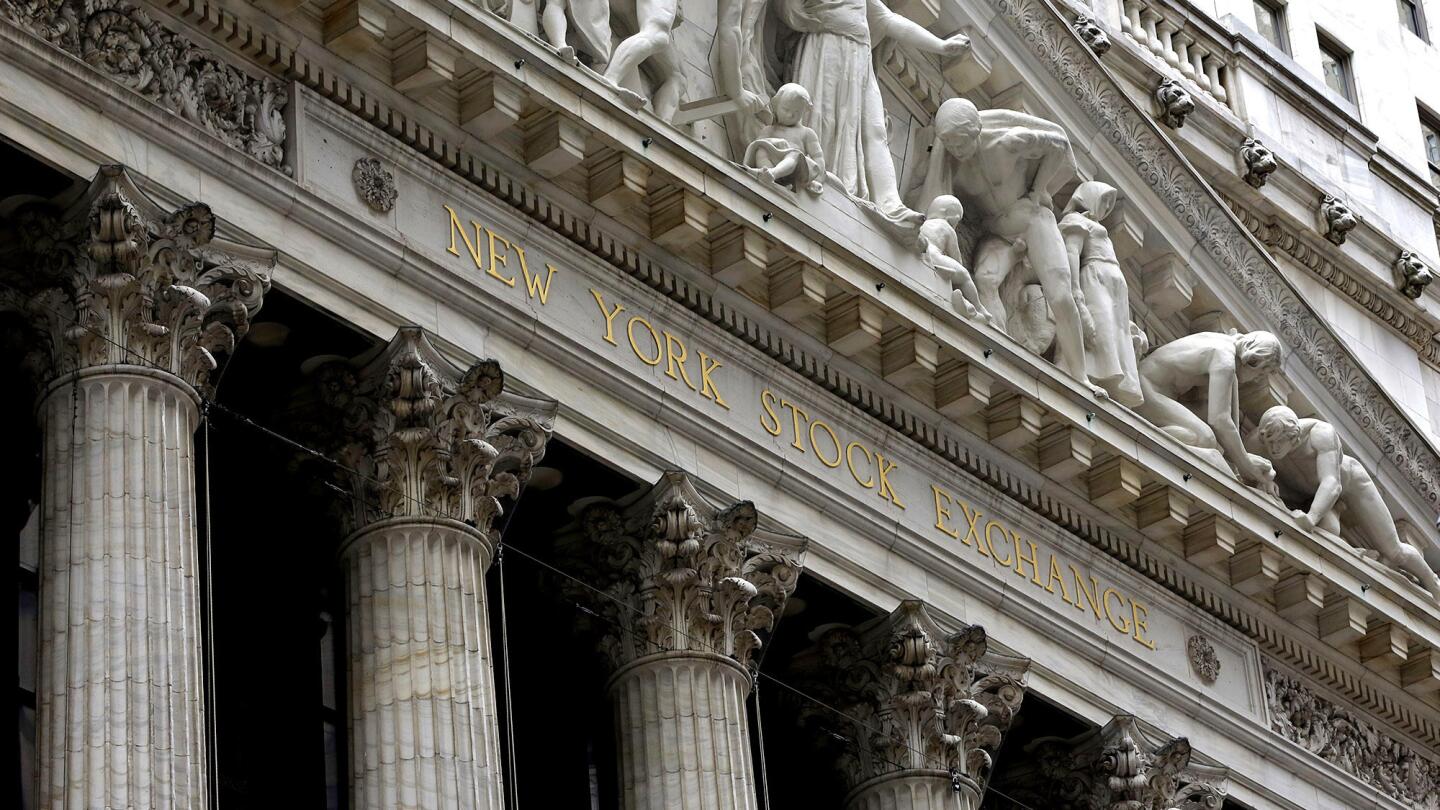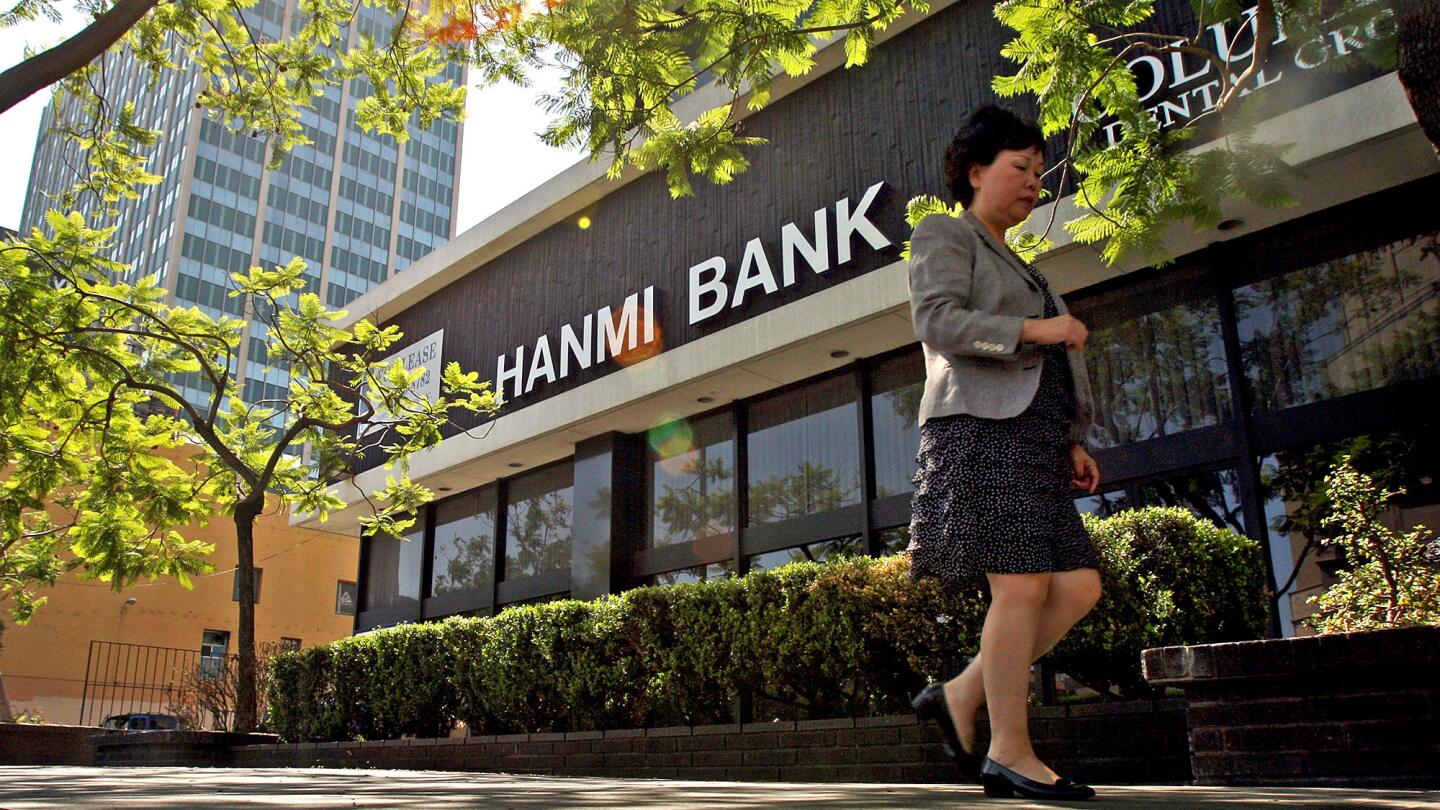Photos: Investing quarterly | Markets overview

Stocks worldwide were hammered at the start of 2016 by fears that the global economy was slowing far more than expected, led by China. Another dive in commodity prices, including oil, also unnerved stock investors -- while driving government bond yields down. But some surprisingly strong U.S. economic reports in February bolstered confidence, and equity markets began to bounce. A rebound in oil prices also helped. So did the Federal Reserve’s decision to delay further interest rate hikes. The final tally: Most bond investments rose in the quarter, while stocks worldwide were a mixed bag -- with the U.S. again the best place to be. Here’s a look at how 15 key investment sectors fared in the quarter:
(Richard Drew / Associated Press)
The Dow Jones industrial average and the Standard & Poor’s 500 both recouped deep dives in the first quarter to close slightly higher. The Dow ended up 1.5% to 17,685.09. The S&P edged up 0.8% to 2,059.74. The average blue chip stock mutual fund gained 0.3%, according to Morningstar. As the Federal Reserve backed off from further interest rate increases, at least temporarily, the U.S. dollar fell against many foreign currencies. That helped boost optimism about U.S. multinational companies, whose sales and earnings were hurt last year by the strong dollar. The Fed’s rate patience also helped fuel a major rally in dividend-paying stocks -- like wireless telecom giant Verizon Communications. Its stock was up 16.8% this year through Friday, the best gain of any Dow stock.
(John Minchillo / Associated Press)
Midsize stocks once again were the market sweet spot, with the Standard & Poor’s 400 index rising 3.3% in the first quarter, beating the 0.8% gain of the blue-chip S&P 500 and the 2.3% advance of the S&P 600 small-stock index. Some investors prefer midsize stocks because the firms have outgrown small-company territory and could be on their way to large-company status. One of the biggest midsize gainers in the quarter was Domino’s Pizza. The firm’s stock is up 20% year-to-date, underpinned by better-than-expected sales and earnings. Domino’s raised its dividend 23% in February.
(Douglas C. Pizac / Associated Press)
Small-company stocks rebounded with bigger shares after the market’s January swoon, but the two main small-stock indexes diverged. The Standard & Poor’s 600 was up 2.3% in the quarter, but the broader Russell 2000 lost 1.9%. The average small-stock mutual fund rose 0.5%, according to Morningstar. Weakness in biotech stocks and in financial stocks hurt the Russell index in the quarter. Bank stocks lost ground after the Federal Reserve decided against raising interest rates further in the quarter. Higher Fed rates help banks because they typically raise their loan rates faster than their deposit rates. Shares of Los Angeles-based Hanmi Financial dropped 7.2% in the quarter.
Advertisement

Weakness in some big-name technology stocks and in the biotech sector kept the Nasdaq composite index in the red in the first quarter, despite a mid-winter rebound. The Nasdaq lost 2.7% in the three months, compared with a 0.8% gain for the S&P 500. The average biotech stock is down 20% year-to-date, leading a broad pullback in the health care sector. Nasdaq also was held back by Amazon, which is down 11% this year after rocketing 118% last year.
(Jonathan Alcorn / AFP/Getty Images)
Yields on many cash accounts edged up in the quarter but remained close to zero, after the Federal Reserve’s initial 0.25-point rate hike in December. The average annualized yield on money market mutual funds was 0.11% this week, according to iMoneyNet. That was up slightly from 0.02% at year-end. The average yield on one-year bank certificates of deposit nationwide now is 0.28%, up from 0.27% at year-end, according to Bankrate.com. Many banks are flush with deposits and are in no hurry to boost rates paid to savers.

A fresh scare about slowing global economic growth triggered another rush of money into government bonds worldwide in the first quarter, as investors sought safety. That drove bond yields sharply lower. The yield on the benchmark 10-year U.S. Treasury note fell as low as 1.53% in February from 2.31% at year-end. The yield closed Friday at 1.77%. The drop in yields pushed bond prices higher, produced hefty “total” returns (interest plus price appreciation). The average mutual fund that owns long-term U.S. bonds soared 7.3% in the quarter -- trouncing returns on most U.S. stocks, according to Morningstar.
(J. David Ake / Associated Press)
Tax-free municipal bonds have been a haven from turmoil in other markets over the last year. That continued in the first quarter, as the finances of many state and local governments continued to improve -- despite some high-profile trouble spots, such as Illinois and Puerto Rico. The average mutual fund that owns long-term California muni bonds posted a total return of 1.8% in the quarter, after 3.6% gain in 2015. Because muni interest is tax exempt the true return is higher.
(Marcus Yam / Los Angeles Times)Advertisement

Popular among many 401(k) savings plan investors, target-date retirement mutual funds promise to maintain a mix of stocks and bonds that will automatically tilt toward more bonds -- and, in theory, less risk -- as the investor’s retirement date nears. And by staying diversified, the funds avoid the volatility that investors can suffer if they’re solely in stocks or solely in bonds. In the first quarter every target-date fund category tracked by Morningstar produced positive returns, as gains on bonds boosted overall results. The average returns ranged from 1.8% on the 2000-2010 funds to 0.2% in the 2051-plus funds.
(Thomas Barwick / Getty Images)

European stocks bounced back from their worst levels of the quarter, but the average European stock mutual fund still lost 2.5% in the three months, according to Morningstar. The funds were lower even though the dollar fell against the euro, which helped U.S. investors’ returns. Global investors remain suspicious of European shares even though the European Central Bank is pouring more stimulus into financial markets -- including fostering negative yields on European government bonds.
(Philip Lee Harvey / Getty Images)
Asian stock markets were broadly lower in the quarter, failing to bounce back as quickly as Wall Street. Investors remained spooked by China’s economic slowdown -- and, more recently, by fears that Japan’s economy is worsening. The average mutual fund that owns Chinese shares fell 4.7% in the quarter, though in the last month it was up 9.7%, according to Morningstar. The average Japanese fund was off 3.6% in the quarter.
(ChinaFotoPress / Getty Images)
The average emerging-market stock mutual fund turned positive in the first quarter, posting a 3.9% gain, according to Morningstar. That followed a 13% plunge in 2015, as plummeting commodity prices hammered many developing economies. The first quarter turnaround was led by Latin American stocks. Funds that own only Latin American shares soared 14.7% in the three months -- after crashing 29% last year. A weaker dollar has helped U.S. investors’ returns this year. But whether the bottom has been reached in emerging markets remains to be seen.
(Alexandre Meneghini / Associated Press)Advertisement

For years, the health care sector has been a stock market leader. But sentiment began to sour on the stocks in the second half of last year. That continued in the first quarter, when the average mutual fund that focuses on health care slumped 13.4%, according to Morningstar. One issue has been rising political criticism of pricing of new drugs, particularly from the biotech sector. The average biotech stock is down 20% this year.
(Rafe Swan / Associated Press)

Normally staid utility stocks rocketed in the first quarter, benefiting from many investors’ appetite for dividend-paying shares considered to be relative havens. The average utility-focused stock mutual fund surged 11.2% in the three months, according to Morningstar, compared with a mere 0.8% gain for the average blue chip stock. But many analysts warn that utility stocks have become pricey after their powerful advance.
(Charlie Riedel / Associated Press)






